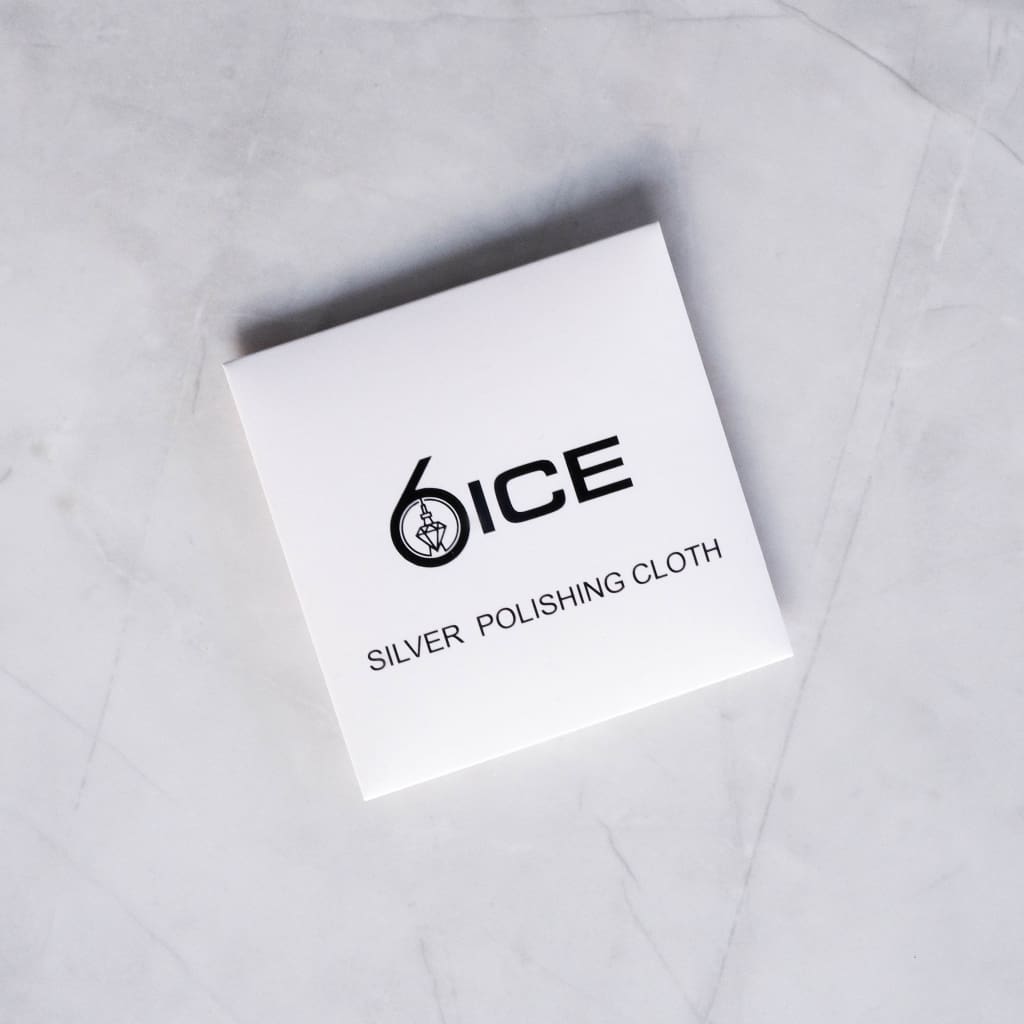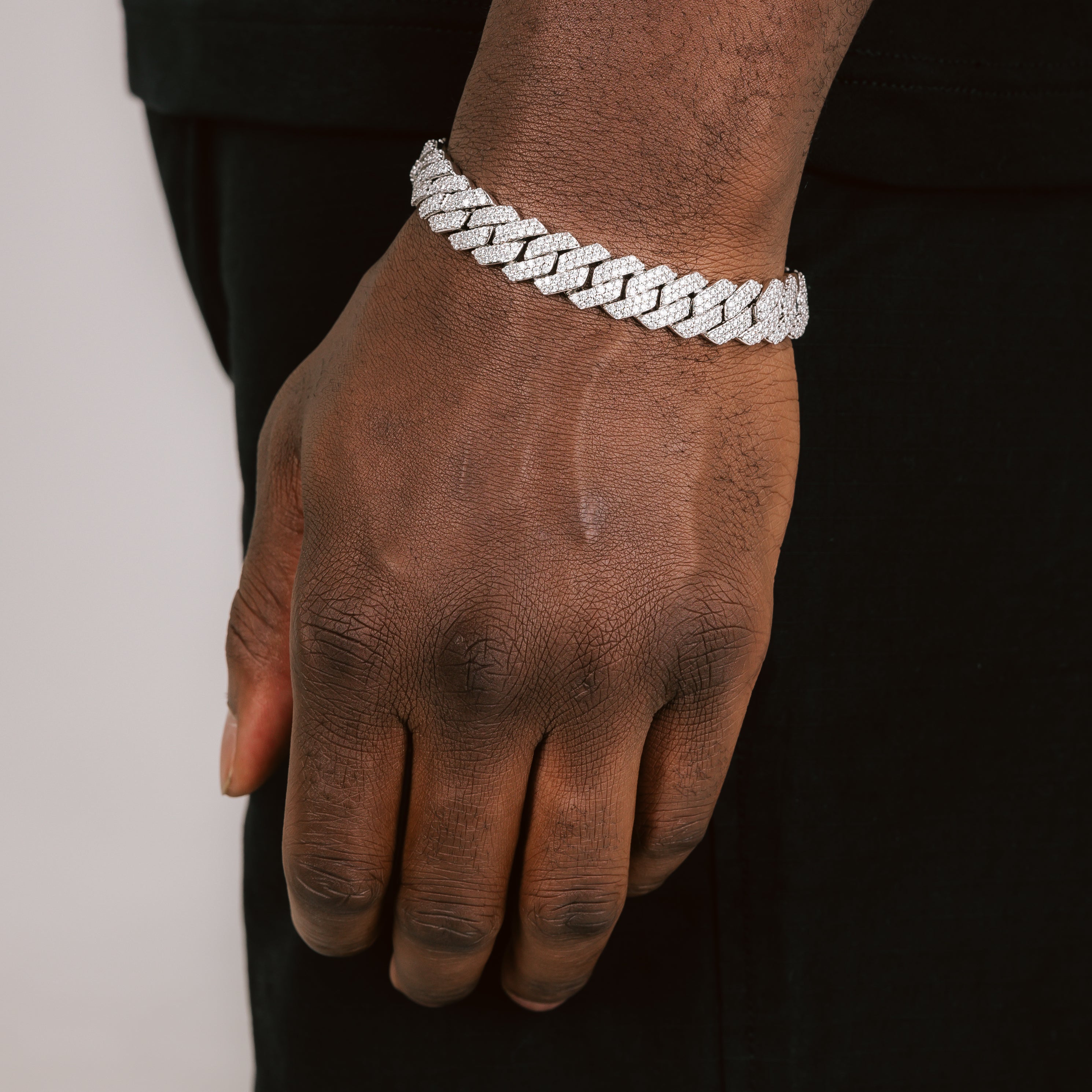Jewelry Cleaning Cloth
Achieve a briliant shine with our high-quality reusable polishing cloth
£0.00 £20.00

Your Cart Is Empty
LIMITED TIME OFFER - SALE ENDS IN: ::
FREE GIFT
FREE SHIPPING
Add Moissanite jewelry to your order and receive a free gift: diamond tester.
Achieve a briliant shine with our high-quality reusable polishing cloth

Your Cart Is Empty
Your purchase must be $100 and over to get a Free Secret Chain!
Your purchase must be $150 and over to get the Free Gift!
Shop now and get a FREE Mystery Box (worth up to $250) with any purchase
Offer ends in 10:00

 (119 reviews)
(119 reviews)
Upgrade your order with this stunning piece to match with your other items.
£70.00£155.00
£70.00£155.00
£70.00£155.00
Decline this offer
By entering my email address I agree to receive all communication from 6 ICE.
Enter your phone number
to get EXTRA 10% OFF.
No, I don't want my prize
No, I don't want Extra 10% OFF
SHOP BY CATEGORY
SHOP BY COLLECTION
CLOTHING NEW
SHOP BY CATEGORY
SHOP BY COLLECTION
If you're curious about the intricate craftsmanship behind the creation of moissanite, you've come to the right place. In this article, we will walk you through the meticulous step-by-step process of making moissanite, revealing the artistry and precision involved in every stage. Whether you're a jewelry enthusiast or simply intrigued by the science of gemstone creation, join us as we explore the fascinating journey of how moissanite is made.
Crafting moissanite correctly is of utmost importance to ensure its optimal beauty and quality. Every step in the manufacturing process, from the synthesis of silicon carbide to the cutting and polishing of the gemstone, requires meticulous attention to detail and precision. By adhering to strict crafting techniques, skilled artisans can bring out the maximum brilliance and fire in each moissanite stone. Additionally, proper quality control measures and certification processes guarantee that only the finest moissanite gems make their way into the market, providing consumers with a reliable and stunning alternative to traditional diamonds.
The first step in the creation of moissanite involves synthesizing silicon carbide, the primary material used to make the gemstone. By combining silicon and carbon in a high-temperature furnace, it is possible to produce a crystal structure that resembles the natural formation of moissanite.
Once the silicon carbide is synthesized, it is transformed into large crystals through a process called the Lely method. In this method, the silicon carbide is heated and gradually cooled, allowing the crystals to grow over time. The resulting crystals are then carefully inspected and selected for their quality and clarity.
After the crystals are obtained, they undergo a meticulous cutting and shaping process. Skilled artisans use specialized tools and techniques to cut the crystals into desired shapes, such as round brilliant, princess, or cushion cuts. This step is crucial in maximizing the brilliance and fire of the moissanite gem.
Once the crystals are cut, they are then faceted to enhance their optical properties. Faceting involves creating multiple flat surfaces, known as facets, on the gemstone to reflect and refract light, resulting in its characteristic sparkle. After faceting, the moissanite is polished to achieve a smooth and lustrous finish.
Before the moissanite gems are ready for the market, they undergo rigorous quality control measures. Each gem is carefully inspected to ensure it meets the highest standards of clarity, color, and cut. Additionally, reputable moissanite manufacturers provide certification to guarantee the authenticity and quality of their products.
The finished moissanite gemstones are then ready to be set into jewelry pieces, such as rings, earrings, or necklaces. With its exceptional brilliance and durability, moissanite offers a stunning and ethical alternative to traditional diamonds, making it a popular choice among jewelry enthusiasts worldwide.
Synthetic moissanite and natural moissanite are not the same, although they share the same chemical composition of silicon carbide. Natural moissanite is an extremely rare mineral that is found in limited quantities in certain geological formations. On the other hand, synthetic moissanite is created in a laboratory through a process called synthesis. While both types of moissanite possess similar optical properties and exhibit exceptional brilliance, they can be distinguished by their origin. Synthetic moissanite is intentionally produced to mimic the qualities of natural moissanite, offering a more accessible and sustainable alternative to mined gemstones.
Lab created synthetic moissanite possesses the same exceptional hardness as natural moissanite. Both types of moissanite rank 9.25 on the Mohs scale of hardness, making them highly durable and suitable for everyday wear. This remarkable hardness is due to the strong molecular structure of silicon carbide, which gives moissanite its resistance to scratches and abrasions. Whether it is natural or lab created, moissanite's impressive hardness ensures that it can withstand the rigors of daily use, making it an excellent choice for jewelry that is meant to last.

Moissanite is one of the most popular and widely recognized diamond alternatives in the market. While there are several alternatives available, moissanite stands out due to its exceptional brilliance, fire, and affordability. Its optical properties closely resemble those of diamonds, making it difficult to distinguish between the two with the naked eye. Additionally, moissanite offers a more budget-friendly option compared to diamonds, allowing individuals to enjoy the beauty and elegance of a gemstone without the hefty price tag. With its increasing popularity and widespread availability, moissanite has become a sought-after choice for those seeking a stunning and ethical alternative to diamonds.
Yes, moissanite can be made using eco-friendly methods. The process of creating moissanite involves synthesizing silicon carbide through a controlled crystallization process. This method allows for the production of moissanite without the need for mining, which can hurt the environment. Additionally, some manufacturers prioritize sustainable practices by utilizing renewable energy sources and implementing efficient production techniques. By choosing moissanite over traditional mined gemstones, individuals can support eco-friendly alternatives and contribute to the reduction of environmental harm associated with the jewelry industry.
There are several reasons why you should choose moissanite:
Choosing moissanite allows you to embrace a stunning and ethical alternative to traditional diamonds, offering beauty, affordability, and peace of mind.
In conclusion, understanding how moissanite is made provides a fascinating glimpse into the world of gemstone production. From the synthesis of silicon carbide to the meticulous cutting and shaping processes, every step is undertaken with precision and expertise. Moissanite offers a brilliant and sustainable alternative to traditional diamonds, with its exceptional beauty, affordability, and ethical sourcing. Whether you're captivated by its mesmerizing sparkle or drawn to its eco-friendly qualities, moissanite proves to be a compelling choice for those seeking a stunning and responsible jewelry option. Embrace the allure of moissanite and indulge in its timeless elegance, knowing that you have made a conscious and stylish choice.
At 6 Ice, we take pride in our unwavering commitment to craftsmanship, resulting in the creation of stunning jewelry pieces that exude luxury. Each item is meticulously crafted with meticulous attention to detail, guaranteeing impeccable quality that surpasses expectations. We provide unmatched artistry without breaking the bank, whether you are enamored with our distinctive designs or yearn for a personalized creation. Experience affordable elegance, available exclusively at 6 Ice.
Sources
Be the first to hear about new product releases and VIP deals